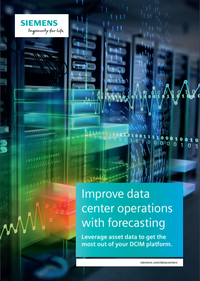There’s a lot that goes into managing a data center. Rising complexity due to the thousands of applications and devices plus the absence of knowledge-transfer be - tween stakeholders makes daily manage - ment an operational challenge. Add plan - ning for future deployments and tenants to the mix and the challenge can easily become a costly, haphazard nightmare. Data centers are critical components of modern enterprises and should be used to drive business, not hinder it. In these en - vironments, it is not only essential to have continuous monitoring in place, but also to effectively manage capacity and discover hidden potential.
The usual answer to these challenges is the implementation of a data center infrastruc - ture management (DCIM) platform. While a typical DCIM solution can bring valuable insights, most don’t go far enough. DCIM software generally focuses on providing re - al-time monitoring and a consolidated view of data with current inventory. We cannot take these functionalities for granted, but the true challenge arises when insights into future states are required. Knowing that in this moment the data center is us - ing 80% of installed capacity is valuable, but what about a month from now? Or a year? How does knowing current capacity help when we need to know if we can support 10 new tenants who each need 100 kW in six months time, while minimiz - ing overprovisioning?

